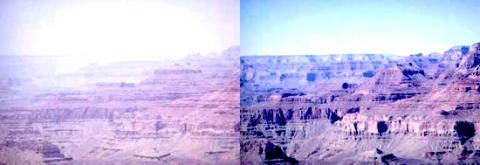When the Bush administration late in 2008 tried to auction energy leases near national parks in Utah, there was an outcry by many who considered siting oil and gas exploration projects next to parks anathema. The Obama administration quickly reversed the decision, but the debate over whether to locate energy projects next to parks continues.
Last week U.S. Rep. Rob Bishop, R-Utah, failed in his bids to get the House Natural Resources Committee to agree that national park designations not be used to "block or oppose the construction of wind, solar, or coal power plants."
One of Mr. Bishop's amendments, proposed to legislation that aims to enlarge Oregon Caves National Monument by 4,000 acres, was voted down by the full committee, 20 against, 17 for. The Republican tried again when the committee considered legislation to increase the size of the San Antonio Missions National Historical Park, with the vote going 23-19 against his amendment, which pertained to wind and solar power facilities.
According to the Republicans on the committee, "Rep. Bishop introduced these amendments due to the alarming trend of interest groups and the National Park Service frequently opposing or blocking the construction of wind, solar or coal energy projects near National Parks."
Specifically, the GOP members cited the following:
• The NPS and Senator Diane Feinstein opposed the 1400-megawatt Solar Six project in Barstow, California, because it was between the Mojave National Preserve and Joshua Tree National Park.
• The NPS is opposing the Whistling Ridge Wind Project in Washington State because turbines may impact the viewshed as the Lewis and Clark National Historic Trail and Oregon Pioneer Trail passes within five miles of the project.
• The Redding Wind Farm in Maine was opposed and ultimately defeated by NPS and groups because turbines would have been as close as one mile from the Appalachian Trail.
• In February 2010, a coalition of nine groups asked the Obama Administration to declare that a coal powered plant in northwest New Mexico violated federal law by polluting the air over national parks and wilderness areas.
• A month later, WildEarth Guardians and the National Parks and Conservation Association asked the Interior Department to declare that coal plants in Colorado were impairing visibility in Rocky Mountain National Park, even though these plants were over 100 miles away.
• The National Park Conservation Association has released a report that details the 10 National Parks they claim are most threatened by coal power plants.
"Energy development is already prohibited in National Parks and it is a far-reaching abuse of power to block energy production, including renewable energy projects, that do not even fall within park boundaries," the Republicans said.




Comments
I'm ashamed to admit that I live in Rob Bishop's district here in Utah. (But I've NEVER voted for him . . . . never will.) While we do need to take careful consideration of our need for energy, the paramount requirement is to be sure whatever we do is done wisely. Mr. Bishop left his wisdom behind a long time ago.
I was an eye witness to the immediate deterioration of air quality and visibility from Sunset Crater and Wupatki when the Four Corners power plant was opened near Farmington, New Mexico. I know first hand how important wisdom will be.
But, y'know, one thing about America . . . . if we all just sit down and work together, we can accomplish almost anything we put our minds to. We just can't forget to use our minds.
Correction -- that was the Navajo station near Page, Az. The Four Corners plant was responsible for not being able to land at the Farmington airport a year or two earlier.